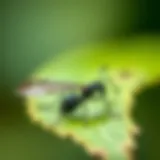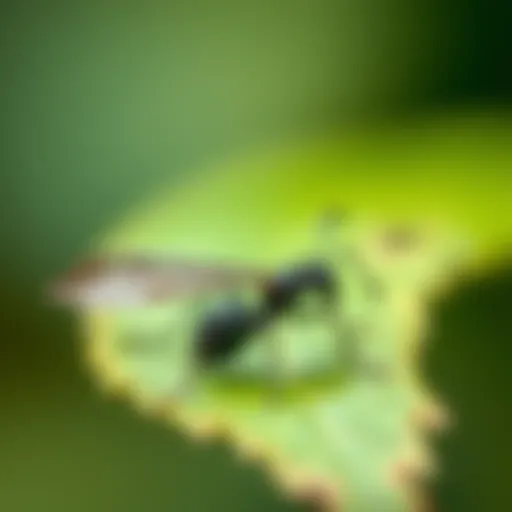The Best Plants for Attracting Bees: A Complete Guide to Enhancing Biodiversity
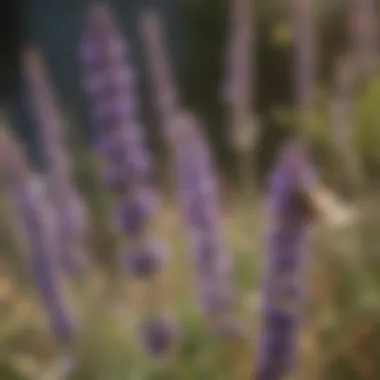

Plant Species Profile
- Introduction to the plant species
Bees are crucial pollinators responsible for the reproduction of many plant species. To attract bees to your garden and support biodiversity, selecting the right plants is essential. One plant species that stands out for its attractiveness to bees is the Lavandula angustifolia, commonly known as English lavender.
- Physical characteristics and appearance
English lavender is a woody perennial herb with narrow, aromatic leaves and stunning purple to lilac flowers arranged in spikes. The plant typically grows up to two feet in height, creating a visually appealing addition to any garden landscape.
- Natural habitat and distribution
Native to the Mediterranean region, English lavender thrives in sunny, well-drained locations. It is widely cultivated worldwide for its fragrant flowers, making it a popular choice for gardeners aiming to attract bees.
- Behavior and social interactions
Given its vibrant floral display and sweet fragrance, English lavender acts as a magnet for bees, attracting them with its abundant nectar and pollen resources. Bees exhibit a preference for this plant due to its accessible flowers and high nectar content, leading to increased pollination activity and garden biodiversity.
Introduction
In the world of gardening and environmental stewardship, the importance of attracting bees cannot be overstated. Bees play a pivotal role in the pollination of plants, contributing significantly to biodiversity and ecosystem health. By exploring the best plants to attract bees, we not only enhance pollination but also create a habitat that supports the proliferation of these essential pollinators. This comprehensive guide delves into the key plants that can help you transform your garden into a haven for bees, fostering a thriving environment where both plants and pollinators can flourish.
Understanding the Importance of Bees
Role of Bees in Pollination
Delving into the role of bees in pollination unveils a fascinating interplay between these diligent insects and the plant kingdom. Bees are master pollinators, aiding in the reproduction of flowering plants through the transfer of pollen. This essential task not only ensures the survival of plant species but also leads to the production of fruits and seeds. The sheer efficiency and precision with which bees carry out pollination make them a popular choice in sustainable gardening practices. The unique ability of bees to navigate landscapes and identify floral resources efficiently sets them apart as primary pollinators, offering distinct advantages in promoting plant diversity and ecosystem balance within the context of this article.
Impact of Bee Decline on Ecosystems
The impact of bee decline on ecosystems sends ripples across the intricate web of life on our planet. As bee populations dwindle, the repercussions are profound, affecting not only plant reproduction but also the stability of entire ecosystems. The key characteristic of this decline lies in the disruption of pollination cycles, leading to diminished crop yields and biodiversity loss. Recognizing the urgency of addressing bee decline is crucial, given the vital role bees play in sustaining wildlife habitats and food production. Despite the challenges posed by bee decline, there is an opportunity to mitigate its consequences through informed conservation efforts and strategic interventions. Navigating the intricacies of bee decline unveils a nuanced perspective on the interconnectedness of species and the urgency of safeguarding bee populations for a sustainable future within the context of this article.
Benefits of Attracting Bees
Attracting bees to your garden is not just about having buzzing visitors; it plays a crucial role in enhancing natural pollination processes. The presence of bees leads to increased crop yield through their efficient pollination activities. This, in turn, promotes biodiversity by ensuring the reproduction of various plant species. By focusing on attracting bees, you contribute to the overall health and sustainability of ecosystems, creating a harmonious environment where plants can thrive.
Enhanced Pollination
Increase in Crop Yield
One of the key benefits of attracting bees is the significant increase in crop yield that they facilitate. Bees are efficient pollinators, transferring pollen from male to female plant parts, thereby enabling the fertilization and production of fruits and seeds. This process directly contributes to higher productivity in agricultural settings, leading to better harvests and improved food security. The presence of bees also enhances the quality of crops, resulting in healthier and more robust produce.
Promotion of Biodiversity
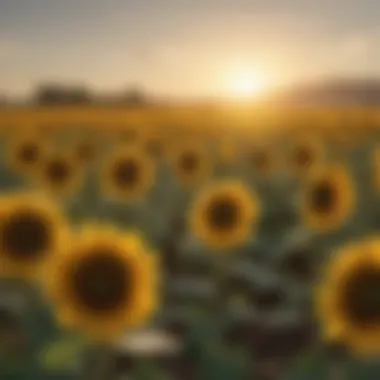

Beyond crop yield, bees play a crucial role in promoting biodiversity within ecosystems. By pollinating numerous plant species, bees aid in the reproduction and genetic diversity of plants. This, in turn, supports the existence of a wide range of flora, creating a rich tapestry of vegetation. A diverse plant community leads to a balanced ecosystem, where each species has a role to play in maintaining environmental equilibrium. Therefore, by attracting bees to your garden, you actively contribute to the preservation and enhancement of biodiversity.
Ecosystem Health
Stabilization of Ecosystems
The presence of bees is essential for the stabilization of ecosystems. Through their pollination activities, bees ensure the continued growth and reproduction of plants, which form the foundation of terrestrial ecosystems. By facilitating the pollination of flowering plants, bees enable the production of seeds and fruits, which are vital food sources for various organisms in the ecosystem. Moreover, a stable plant community contributes to the overall resilience and sustainability of ecosystems, making them less vulnerable to external disturbances.
Support for Wildlife
In addition to plant biodiversity, bees also play a crucial role in supporting wildlife within ecosystems. Many animal species rely on plants for food and shelter, and the presence of bees ensures the availability of these essential resources. By promoting the growth and reproduction of plants, bees indirectly provide food for herbivores and nectar for numerous insect species. Furthermore, bees themselves serve as a food source for predators, contributing to the intricate food web within ecosystems. Therefore, attracting bees to your garden not only benefits plants but also supports a diverse array of wildlife, fostering a balanced and thriving ecosystem.
Characteristics of Plants That Attract Bees
In this crucial section of the comprehensive guide regarding the best plants to attract bees, we delve into the essential aspects of selecting plants that effectively draw these important pollinators to your garden. Understanding the characteristics that make a plant appealing to bees is fundamental to creating a thriving ecosystem. By focusing on specific elements such as flowering period, nectar and pollen production, we can maximize the attractiveness of our outdoor spaces to bees. Choosing the right plants not only benefits bees but also promotes biodiversity and ecosystem health.
Flowering Period
Seasonal Blooms
When discussing seasonal blooms in relation to attracting bees, we are highlighting the significance of plants that blossom during specific times of the year. The timing of flowering plays a crucial role in attracting bees at key periods when they are most active. Plants with seasonal blooms offer a targeted approach to bee attraction, aligning with the natural rhythms of the environment. The unique characteristic of seasonal blooms lies in their ability to synchronize with the foraging habits of bees, ensuring a bountiful supply of nectar and pollen when these pollinators need it most. The advantages of seasonal blooms in this context are manifold, providing bees with a concentrated food source while enhancing pollination in the surrounding area.
Year-Round Flowering
In contrast, year-round flowering plants maintain a continuous supply of nectar and pollen throughout the seasons. These species are valuable for sustaining bee populations, especially during periods of scarcity. The key characteristic of year-round flowering plants lies in their consistent availability, which can support bees during times when natural food sources may be limited. Their unique feature of blooming throughout the year ensures a steady provision of resources for bees, promoting their well-being and contributing to a robust ecosystem. While year-round flowering plants offer persisting benefits for bee attraction, some considerations such as maintenance and resource allocation need to be acknowledged in this article.
Nectar and Pollen Production
Rich Sources of Nectar
Exploring the importance of nectar production in plants that attract bees reveals the essential role it plays in bee foraging behavior. Plants with rich sources of nectar are highly attractive to bees due to the high energy content of this sweet liquid. The key characteristic of nectar-rich plants is their capacity to provide sustenance to bees, fueling their activities such as foraging, nest building, and honey production. Opting for plants that offer abundant nectar ensures a reliable food source for bees, fostering their presence in your garden. While the benefits of nectar-rich plants are evident, considerations such as blooming period and plant diversity impact their effectiveness in supporting bee populations.
Abundant Pollen
Alongside nectar, pollen is a vital component of a bee's diet, providing essential nutrients crucial for their health and well-being. Plants that offer abundant pollen are indispensable for attracting bees, as they contribute to the overall nutritional balance of these pollinators. The key characteristic of plants with abundant pollen lies in their ability to supplement bee diets with this protein-rich substance, aiding in larval development and colony sustainability. Choosing plants that prioritize pollen production enhances the attractiveness of your garden to bees, encouraging their prolonged presence and activity. Considerations such as pollen accessibility and diversity play a significant role in the success of bee-friendly planting schemes.
Top Plants to Attract Bees
In this comprehensive guide on attracting bees, focusing on the top plants for this purpose is paramount. Choosing the right plants plays a crucial role in encouraging bees to visit and pollinate your garden. The top plants not only provide essential nectar and pollen sources but also contribute significantly to the overall health and well-being of bee populations. By understanding the specific traits and benefits of these plants, individuals can create a thriving environment that supports the vital work of bees in pollination.
Lavender
Benefits of Lavender for Bees
Exploring the benefits of lavender for bees reveals a fascinating insight into this plant's role in supporting bee populations. Lavender offers bees a rich and abundant source of nectar, essential for their sustenance and energy. The aromatic scent of lavender lures bees, enhancing their foraging activities and encouraging pollination in the surrounding area. Its vibrant purple blooms not only attract bees but also add a charming aesthetic to any garden. Lavender serves as a popular choice for bee enthusiasts due to its dual benefits of bee attraction and garden beautification.
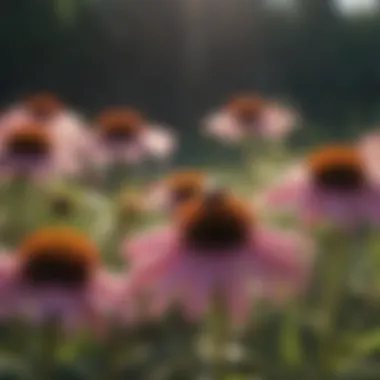

Growing Tips
When it comes to growing lavender to attract bees, certain tips can optimize its potential. Planting lavender in well-drained soil and providing adequate sunlight are crucial for its growth and bloom production. Regular pruning helps maintain the plant's health and encourages continuous blooming, ensuring a steady supply of nectar for visiting bees. Additionally, avoiding excess water and chemical pesticides preserves the natural integrity of lavender, making it an ideal choice for bee-friendly gardens.
Sunflowers
Attractive Qualities for Bees
Sunflowers exhibit unique qualities that make them particularly appealing to bees. The large and vibrant blooms of sunflowers act as beacons for bees, attracting them from a distance. The abundant pollen and nectar resources of sunflowers provide bees with a nutritious food source, supporting their colonies and well-being. Sunflowers' sunny disposition and towering presence in the garden make them a popular choice for both bees and garden enthusiasts.
Cultivation Guidelines
Cultivating sunflowers to maximize their benefits for bees involves understanding their unique growth requirements. Planting sunflowers in well-drained soil and ensuring sufficient sunlight are crucial for their development. Regular watering during the germination phase and moderation thereafter help sunflowers thrive. An important tip for attracting bees is to avoid pesticides that may harm these beneficial pollinators, making sunflowers a sustainable and bee-friendly choice for gardens.
Purple Coneflower
Appeal to Bees
The appeal of purple coneflowers to bees lies in their vibrant and cone-shaped blossoms, which provide a visible landing platform for bees. The ample nectar and pollen stores within these flowers attract bees seeking nutritious resources for their hives. Purple coneflowers' long blooming period ensures a continuous supply of food for bees throughout the season, making them a valuable addition to any bee-attracting garden.
Planting and Maintenance
Ensuring the successful growth of purple coneflowers involves proper planting and maintenance practices. Planting in loamy soil with good drainage and regular deadheading of spent blooms promote healthy plant growth. Providing adequate sun exposure and avoiding overcrowding with other plants enhance the attractiveness of purple coneflowers to bees. Minimal use of fertilizers and pesticides preserves the natural appeal of these flowers, fostering a bee-friendly environment in the garden.
Goldenrod
Value for Bee Attraction
Goldenrod's value for attracting bees lies in its late-season blooms that provide essential food sources as other flowers fade. The clustered yellow flowers of goldenrod offer a profusion of pollen and nectar, attracting a diverse range of bee species. By planting goldenrod, individuals can extend the availability of forage for bees well into the autumn months, supporting their nutritional needs and population sustainability.
Care Instructions
Caring for goldenrod to optimize its benefits for bee attraction involves simple yet crucial steps. Planting goldenrod in well-drained soil with full sun exposure ensures robust growth and abundant blooming. Deadheading spent flowers promotes continuous blooming and prolongs the attractiveness of goldenrod to bees. Regular watering during dry spells and minimal intervention with fertilizers or chemicals maintain the natural appeal of goldenrod, making it an excellent choice for bee-friendly gardens.
Creating a Bee-Friendly Garden
When it comes to creating a bee-friendly garden, the significance cannot be overstated. By cultivating a space that entices bees, individuals play a vital role in promoting biodiversity and maintaining the health of the ecosystem. A bee-friendly garden provides a sanctuary for these essential pollinators, ultimately leading to improved pollination across various plant species. As bees go about their pollination activities, they contribute to the production of fruits, seeds, and flowers, which is crucial for sustaining wildlife and plant communities.
Design Considerations
Plant Diversity
Plant diversity is a fundamental aspect of promoting a bee-friendly environment. By incorporating a wide array of flowering plants that bloom at different times, gardeners ensure a consistent food source for bees throughout the seasons. The key characteristic of plant diversity lies in its ability to support various pollinator species, not just bees. This leads to enhanced pollination efficiency and robust plant growth. One unique feature of plant diversity is that it helps in attracting a diverse range of beneficial insects, birds, and other wildlife, creating a balanced ecosystem within the garden.
Water Sources
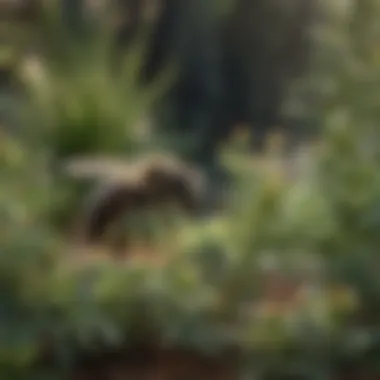

Water sources play a crucial role in creating a bee-friendly garden by providing bees with access to a vital resource for their survival. Having shallow dishes with fresh water or incorporating a small water feature can attract bees and other pollinators to the garden. The key characteristic of water sources is their ability to hydrate bees during their foraging activities, especially on hot days. This feature is particularly beneficial as it helps in maintaining the overall health and activity of bees within the garden. However, it is essential to regularly clean and refill water sources to prevent the breeding of mosquitoes and ensure the safety of the bees.
Maintenance Practices
Pruning Tips
Pruning plays a significant role in maintaining a bee-friendly garden by allowing for better sunlight penetration and air circulation among plants. Proper pruning practices help in promoting flowering and the overall growth of plants, which are essential for attracting bees. One key characteristic of pruning tips is their ability to shape plants to optimize their flowering potential, thereby increasing their attractiveness to bees. This unique feature allows gardeners to control the size and structure of plants, providing a favorable environment for bees to forage and pollinate.
Avoiding Pesticides
Avoiding the use of pesticides is vital for maintaining a healthy bee-friendly garden. Pesticides can be harmful to bees and other pollinators, leading to detrimental effects on their populations. By opting for organic pest control methods and natural alternatives, gardeners can protect bees while safeguarding the ecosystem. The key characteristic of avoiding pesticides is its role in preserving the health and vitality of bees within the garden. This unique feature ensures that bees can thrive without being exposed to harmful chemicals, promoting a natural and sustainable environment for these crucial pollinators.
Tips for Bee Conservation
Bee conservation is a vital aspect of promoting biodiversity in ecosystems. By actively supporting local bee populations, individuals can contribute significantly to sustaining the environment. In this section, we will highlight key tips for bee conservation that not only benefit bees but also have a positive impact on plant pollination and ecosystem health. Understanding the importance of sustaining bee populations is crucial in maintaining a balance within ecosystems.
Supporting Local Bee Populations
Native Plant Preferences
When considering supporting local bee populations, emphasizing native plant preferences is essential. Native plants have evolved alongside native bee species, making them a natural and nutritious food source for these essential pollinators. The key characteristic of native plant preferences lies in their adaptation to the local climate and soil conditions, ensuring a thriving habitat for bees. Choosing native plants also helps in preserving local biodiversity and ensures the survival of indigenous bee species, which may be well-suited to the regional ecosystem. While introducing exotic plants may provide aesthetically pleasing options, native plant preferences are more advantageous as they require less maintenance, are adapted to the local conditions, and support a broader range of local pollinators.
Community Involvement
Community involvement plays a crucial role in bee conservation efforts. By fostering a sense of collective responsibility towards bee populations, communities can implement bee-friendly practices on a larger scale. The key characteristic of community involvement lies in its ability to bring together individuals, organizations, and local authorities to work towards a common goal of preserving bee habitats and promoting pollinator-friendly environments. Community-led initiatives such as creating bee-friendly gardens, organizing educational workshops on bee conservation, and advocating for policies that protect pollinators can have a significant impact on bee populations. While community involvement has the advantage of mobilizing resources and expertise, it may face challenges in ensuring consistent participation and coordination among stakeholders. Despite potential obstacles, community involvement remains a powerful tool in advancing bee conservation efforts and fostering a culture of environmental stewardship.
Educational Outreach
Educational outreach plays a crucial role in raising awareness about bee conservation and engaging the public in conservation efforts. By disseminating information about the importance of bees as pollinators and the threats they face, educational outreach initiatives can inspire individuals to take action towards supporting bee populations and preserving their habitats.
Awareness Campaigns
Awareness campaigns serve as a key aspect of educational outreach in bee conservation. By leveraging various media platforms and communication channels, awareness campaigns aim to educate the general public about the significance of bees in ecosystems and the importance of conserving their populations. The key characteristic of awareness campaigns lies in their ability to reach a wide audience and instigate behavioral change towards more bee-friendly practices. Awareness campaigns also highlight the role of bees in food production, biodiversity conservation, and environmental sustainability, emphasizing the interconnectedness of all living organisms.
School Programs
School programs play a crucial role in instilling environmental awareness and conservation values in the younger generation. By integrating lessons on bee conservation into school curricula, students can learn about the importance of bees as pollinators and the ways in which they can contribute to bee conservation efforts. The key characteristic of school programs lies in their ability to cultivate a sense of environmental responsibility and empathy towards pollinators among students. School programs also provide practical opportunities for students to engage in hands-on activities such as planting pollinator-friendly gardens, conducting bee surveys, and participating in local conservation projects. Despite challenges in curriculum integration and resource allocation, school programs remain a fundamental tool in nurturing future generations of environmentally conscious individuals committed to promoting bee conservation.
Conclusion
In the realm of attracting bees and promoting biodiversity, the conclusion serves as a pivotal point of reflection on the importance of implementing bee-friendly practices. By embracing a conscientious approach to gardening that prioritizes sustainable practices and environmental stewardship, individuals can actively contribute to ecosystem health and vitality. This article elucidates the significance of adopting bee-friendly habits to foster a harmonious relationship between nature and humanity, emphasizing the essential role of bees as pollinators in sustaining our ecosystems.
Embracing Bee-Friendly Practices
Sustainable Gardening
Exploring the realm of sustainable gardening unveils a holistic approach that aligns with the ethos of this article - enhancing biodiversity and promoting ecosystem health through conscious horticultural practices. Sustainable gardening encapsulates the essence of harmony between cultivation and conservation, advocating for the use of organic fertilizers, natural pest control methods, and water conservation techniques. The fundamental hallmark of sustainable gardening lies in its ability to nurture and support not only plant life but also the intricate web of pollinators, with bees at the forefront. Through the avoidance of synthetic chemicals and the cultivation of native plant species, sustainable gardening champions a regenerative model that benefits both flora and fauna. Embracing sustainable gardening not only enriches the environment but also cultivates a symbiotic relationship with bees, aligning human actions with ecological integrity.
Environmental Stewardship
Delving into the domain of environmental stewardship within the context of bee-friendly practices sheds light on the profound impact that conscious environmental management can have on bee populations and biodiversity at large. Environmental stewardship embodies a commitment to preserving and safeguarding the natural world, recognizing the interconnectedness of all living organisms within ecosystems. At the core of environmental stewardship lies a dedication to minimizing ecological footprint, conserving resources, and advocating for sustainable land use practices. Within the scope of this article, environmental stewardship conveys the imperative of utilizing eco-friendly strategies, such as creating bee-friendly habitats, conserving natural landscapes, and raising awareness about the importance of pollinators. The unique feature of environmental stewardship lies in its capacity to inspire collective action towards environmental conservation, empowering individuals to become stewards of the Earth and advocates for bee welfare. By integrating environmental stewardship into bee-friendly initiatives, individuals can foster a culture of respect for nature and contribute meaningfully to the preservation of bee populations and their vital role in global ecosystems.






